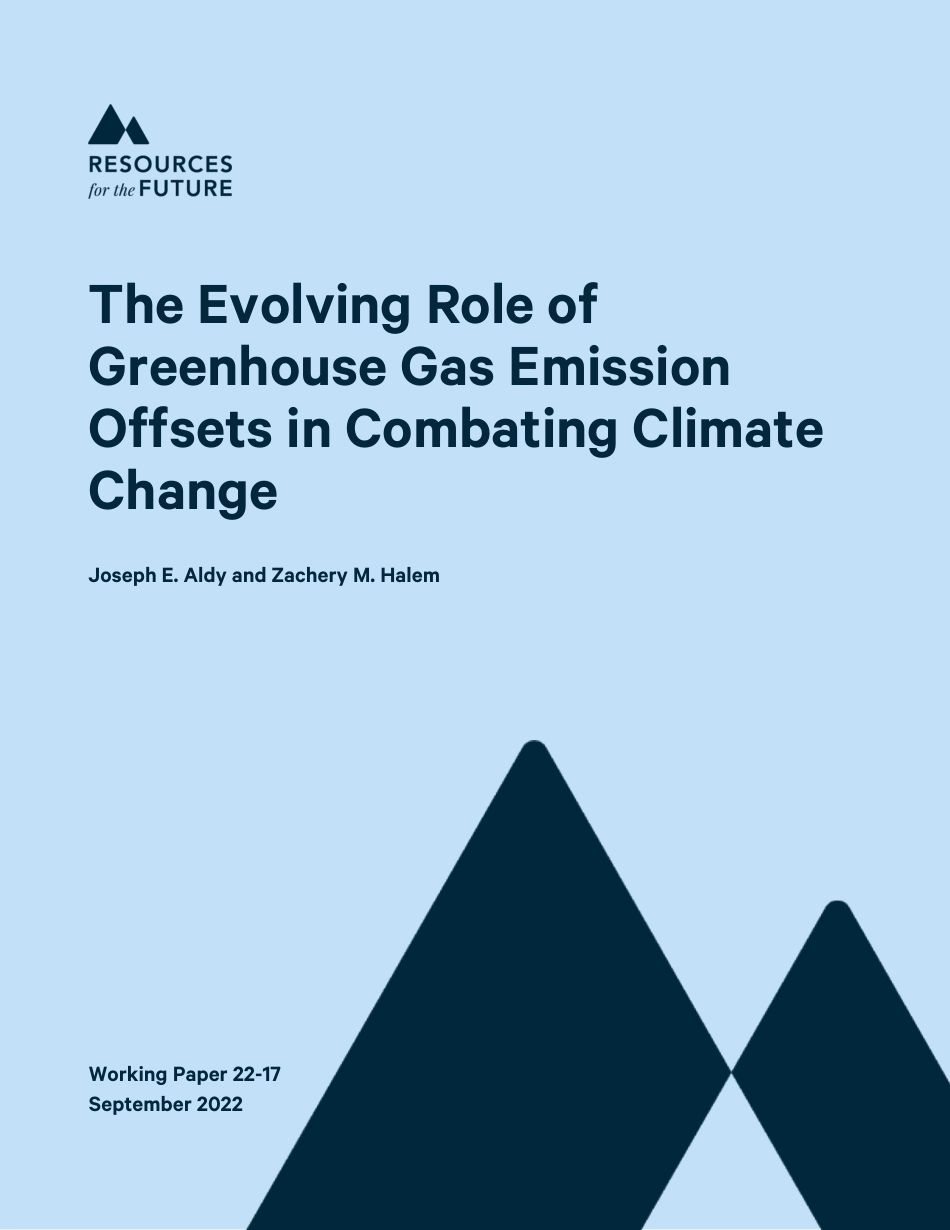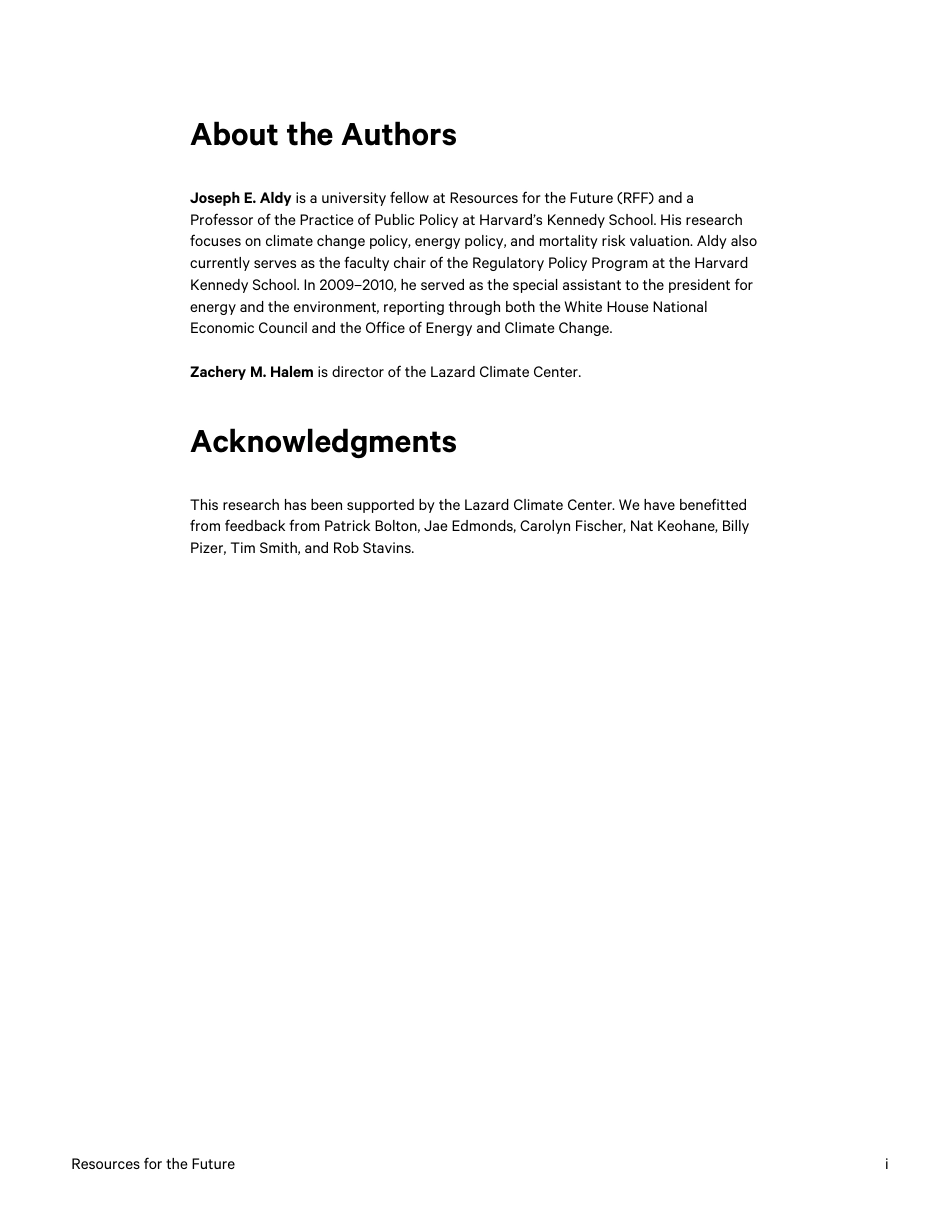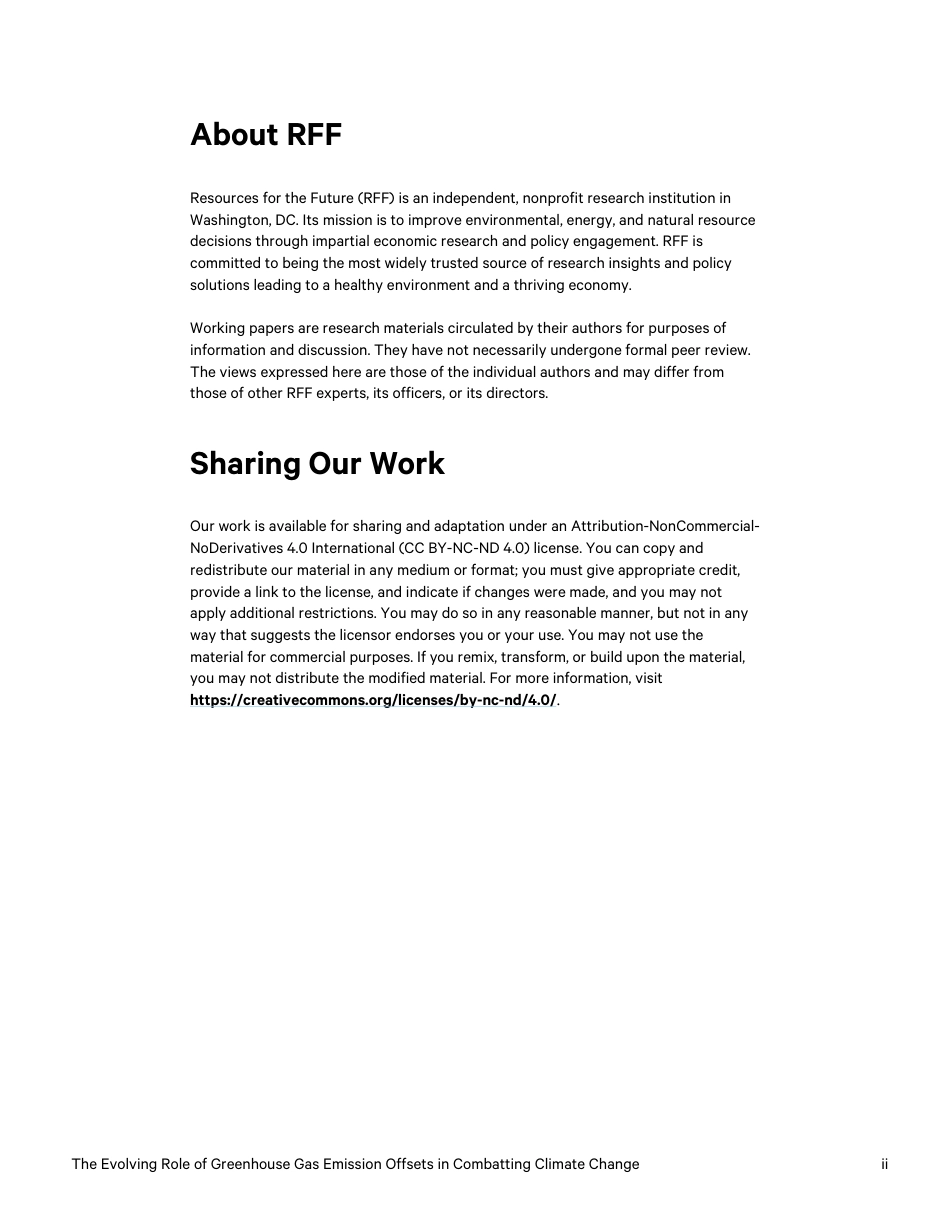The Evolving Role of Greenhouse Gas Emission Offsets in Combating Climate Change Joseph E. Aldy and Zachery M. HalemWorking Paper 22-17 September 2022 Resources for the Future i About the Authors Joseph E. Aldy is a university fellow at Resources for the Future (RFF) and a Professor of the Practice of Public Policy at Harvard’s Kennedy School. His research focuses on climate change policy, energy policy, and mortality risk valuation. Aldy also currently serves as the faculty chair of the Regulatory Policy Program at the Harvard Kennedy School. In 2009–2010, he served as the special assistant to the president for energy and the environment, reporting through both the White House National Economic Council and the Office of Energy and Climate Change. Zachery M. Halem is director of the Lazard Climate Center. Acknowledgments This research has been supported by the Lazard Climate Center. We have benefitted from feedback from Patrick Bolton, Jae Edmonds, Carolyn Fischer, Nat Keohane, Billy Pizer, Tim Smith, and Rob Stavins. The Evolving Role of Greenhouse Gas Emission Offsets in Combatting Climate Change ii About RFF Resources for the Future (RFF) is an independent, nonprofit research institution in Washington, DC. Its mission is to improve environmental, energy, and natural resource decisions through impartial economic research and policy engagement. RFF is committed to being the most widely trusted source of research insights and policy solutions leading to a healthy environment and a thriving economy. Working papers are research materials circulated by their authors for purposes of information and discussion. They have not necessarily undergone formal peer review. The views expressed here are those of th...



